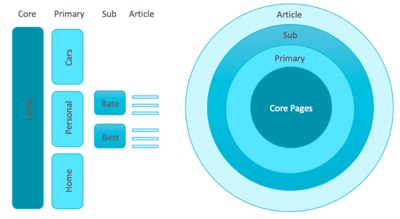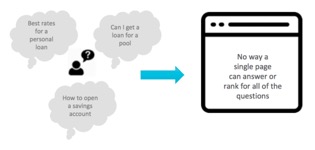By Wayne Cichanski
Steps To Launch a Journey-Focused SEO Strategy
Ready to develop an organic search strategy but unsure where or how to begin? Don’t be intimidated by the SERP landscape or your competitors’ share of voice. Instead, think of SEO as a journey in which you need to invest time, resources, and focus.
An approach that can help you get your SEO program off the ground – one that is foundational to our work at iQuanti – is to think of how search integrates with your overall purchase path. By envisioning search as a facilitator of the buyer journey, you can more easily weave SEO into your regular work streams in IT, marketing, and customer experience.
How Do I Launch a Journey-Focused SEO Strategy?
First, you need to align your products or services with the problems they solve for your customers. That means going beyond identifying who buys from you – think instead of the questions people have regarding your product or service.
One of the best, most fundamental tips I can give is to think of EVERY web page as a first point of entry from organic search. In other words, because consumers conduct all manner of searches, each of your pages has to be search-optimized. You want to maximize the chances that shoppers will find your solution.
Typically, people think of website user behavior as a linear path. That is, visitors come in on the home page, click on a link, visit another page, and ultimately “convert” by filling out a form or making a purchase. If you do SEO properly, though, each of your pages can be ranked number one on Google and can drive traffic (and conversions) for the keywords it represents.
The key is to ask how your individual pages address user intent. Your prospects are at all different stages in the buying process when they enter your website. Some may know exactly what they are looking for (i.e., in the “purchase” phase of the buyer journey). Some may be trying to define the best option in the market (in the “consideration” phase). Still others may be learning how your product or service can solve their problem (the “awareness” phase). You need pages that accommodate each of these personas – and feature the keywords they would use in a web search.
Now that you understand this principle, you can start mapping a search strategy to your customer journey. The idea here is to put yourself into the shoes of your customers in each part of the buying cycle.
How to Map a Search Strategy to Customer Journey
- Identify your products or services.
- Define if it is a single persona or different personas who buy what you’re selling.
- Take a product line and start defining major topical questions or use cases above and below your product terms.
- Overlay different points of view:
- Customer needs
- Product benefits
- Funnel stage
- Branded terms
- Go to a tool like SEMrush to do keyword research against each of your topical categories.
- As you download all the keyword data, keep the mapping in the grouping as it will then be nested into groups. Arrange these groups in funnel states from upper to lower.
- Now that the journey is mapped with all the categories across the entire funnel, you have a solid understanding what the landscape entails. With this you can:
- Forecast modeled traffic and revenue
- Create a content gap analysis
- Create a content development plan
- Develop a site architecture plan
- Conduct a competitive share-of-voice analysis
- Track performance (conversion, traffic, and revenue) at a theme and funnel state level
- Create a targeted outreach and social plan to support your targeted themes
As you map your journey, you will place categories into primary themes and sub-themes from an overall core vertical. Then you will have supporting articles at each sub-theme level. Here’s an example from the financial-services vertical:

Maintaining this process will allow you to develop content that fits into each of these categories – and most importantly, the user intent of each journey stage. As you develop content, you are able to match more of what your audience is searching for, thus satisfying their needs.
How a Journey-Matched Search Strategy Adds Value
Google wants to deliver the most relevant answers to the questions users are asking. If you type a keyword into Google, you will notice that Google “gets it right” the majority of the time. Essentially, Google knows by the keyword you are typing what you are ultimately looking for – and serves up results that address your query.
If all you have in market for your products are individual product pages, you will fail to capture the intent most users’ search queries. And your competition will probably pick up the slack.
The bottom line is that no one page can accommodate the intent of every possible question. The solution is to have multiple pages of compelling content that addresses users’ needs.

Two main impacts you will discover by matching your search strategy to your customer journey:
- First is a better user experience. Your users will find the information they are looking for, no matter what the stage of the buying process they are in.
- Secondly, as these pages begin to rank, you will also drive more volume and traffic to your website through all the new rankings.
SEO is an ongoing process, but if you put your customer first you will be aligned with Google’s mission statement. Integrate search into your standard work streams within your organization and you will be rewarded with an uplift in traffic and conversion.




